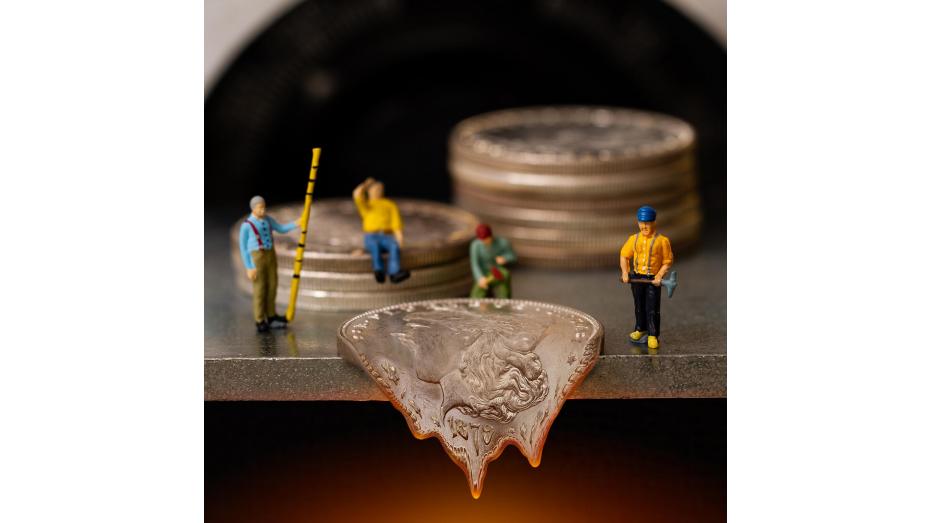The Origin of the Pittman Act
On April 23rd, 1918, Congress enacted the Pittman Act, which oversaw the melting of nearly half of every Morgan Dollar ever struck. To this day, this remains one of the largest mass melts of coinage conducted by the U.S. Mint in history. To this number in perspective, if each of the 270,232,722 Morgan Dollars melted during this act were stacked on top of each other, they would form a tower over 400 miles high. Why was such a large portion of the Morgan Dollar series destroyed in this manner? Like other coin melts, the answer lies with the current events of the time.
In 1918, World War I had entered its final stages. The grinding trench warfare that had scarred the European countryside had finally begun to give way as the Allied Powers slowly overwhelmed the exhausted forces of Germany and Austria-Hungary. Determined not to surrender, Germany sought to sabotage the economies of the Allied Powers rather than defeat them on the battlefield. In particular, Germany targeted Britain’s dependence on its overseas colonies, with India being the largest and most important.
In India, German agents spread rumors that the British government did not have enough silver to back up the paper certificates used to purchase war goods and support the economy. Fearing that their paper money was worthless, thousands of Indians attempted to cash their certificates for precious metal. In turn, the Indian economy was put on the brink of collapse. This would then trigger a domino effect and cause the British economy to crumble in a similar manner. Britain soon faced the very real threat that it may have to recall most of its army from Europe in order to maintain control over its colony.
To prevent its ally from being forced to leave the war, America provided a solution: the Pittman Act of 1918. Introduced by Senator Key Pittman from Nevada, this act authorized the conversion of up to 350,000,000 silver dollars into bullion. As a stipulation of this act, it was mandated that enough silver would later be purchased from American mines and be struck to replace the lost dollars. The bullion created by the act was then sold at $1.00 per ounce to Britain, allowing them to back their silver certificates with enough of the precious metal to keep their economy afloat. Ultimately, the Pittman Act was able to keep Britain in the war and ensure an Allied victory against the Central Powers.
While a necessary act to keep our ally Britain in the war, the blow to American numismatics was almost incalculable. With so many coins lost forever due to the Pittman Act, many issues of the Morgan Dollar became drastically more difficult to acquire, especially in higher grades. Today, the population of surviving examples is ultimately unknown. PCGS has estimated that only 10% of the total mintage of Morgan Dollars still survives to this day, thanks in large part to the Pittman Act.
Looking for some of the finest quality Morgan Silver Dollars to survive the Pittman Act? Rare Collectibles TV has a broad range of Morgan Dollars available, many of them preserved in stunning Mint State condition!






